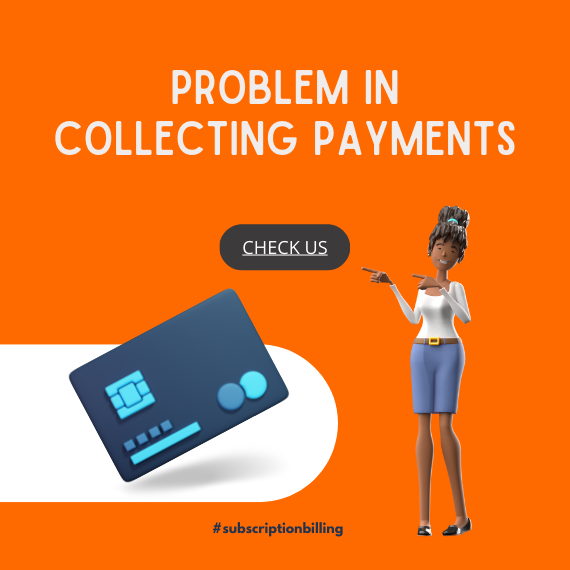4 ways your ecommerce checkout is hurting your business

Does your checkout need a checkup? For nearly all ecommerce businesses, the answer is an emphatic yes, according to MYFUNDBOX Subscription Billing’s global payments platform, Stripe. In a recent study that surveyed leading B2B and B2C ecommerce sites and customers, Stripe discovered that 96% of sites in North America, as well as 95% in Asia-Pacific and 94% in Europe, had at least five basic errors in their checkouts. The problem not only spans regions, but also organizations of all sizes, from startups to large, established ecommerce sites with teams focused on increasing conversions.
You might be wondering what’s so bad about a few minor checkout hiccups. It all comes down to friction. The longer and more complicated the checkout process, the more likely that customers will get frustrated and give up: 19%, or nearly 1 in 5, of the ecommerce customers in Stripe’s study said they’d abandon a transaction if checking out took more than a minute. The numbers were even higher in Europe and Asia-Pacific, where 21% and 34% indicated they wouldn’t stay. Even if customers manage to complete the purchase, they could end up leaving with a negative impression of your company which can negatively impact repeat purchases.
With all this in mind, it’s clear that optimizing your checkout is critical to your ecommerce site’s growth and success. It can be a big task, but the sooner you start, the sooner you’ll reap the benefits. Just follow these steps.
Step 1: Identify trouble spots
Even small snags in the checkout process can have a big impact on customer frustration. Stripe’s research found that the most common errors fall into four main categories:
1. Checkout form design
Minor optimizations such as address auto-complete, descriptive error messaging (i.e., alerting customers when they try to use invalid cards), and credit-card number formatting can speed the checkout process along and increase conversions. But Stripe found that nearly half of top businesses made at least three mistakes in this area, including 51% that didn’t support auto-complete [61% in Europe, 52% in Asia-Pacific] and 36% that didn’t format numbers in blocks of four. 77% [75% in Europe, 70% in Asia-Pacific] also did not offer an option to save payment information for future purchases, creating an obstacle to repeat business.
2. Mobile optimization
With 50% of customers doing most of their shopping from a mobile device, and more than 50% of all ecommerce traffic coming from smartphones, it’s clear that mobile ecommerce is here to stay. However, shoppers abandon carts on mobile devices at more than twice the rate of desktop, often because of mobile-unfriendly practices that make checkout difficult. These include not supporting mobile wallets such as Apple Pay (76% of North American businesses surveyed) and Google Pay (88% of North American businesses surveyed), and not having a responsive form that automatically resizes for a mobile device’s smaller screen.
3. Localization
As ecommerce grows globally—it reached $26.7 trillion in 2021—more and more companies are finding they need to support purchases from international customers. This is where localization becomes important. A full 40% of customers outside the US and Canada prefer to pay with a method other than a credit card, such as a digital wallet or bank transfer, and expect sites to offer them the option to do so.
In a separate study, Stripe found that businesses enabling popular European payment methods saw a 40% increase in incremental sales. In addition, buy now, pay later methods such as Klarna and Afterpay not only appeal to international customers in Europe, the UK, Australia, and New Zealand, but can help boost sales in the US and Canada by offering the ability to pay in installments.
4. Buyer trust and security
Security during checkout is a delicate balance. Customers want a secure payment experience, but some security measures add time and friction to the process. One of the ways ecommerce websites can help alleviate the problem is by enabling customers to check out as guests, without collecting or storing their personal information. Another option is to allow customers to log in through their social media accounts, which keeps their information on a site they already trust. However, Stripe found that 18% of sites surveyed didn’t allow guest checkout [32% in Asia-Pacific, 41% in Europe], and 90% [77% in Asia-Pacific, 85% in Europe] didn’t allow customers to check out by connecting to a social media profile—both missed opportunities to build trust.
Step 2: Optimize and correct
To optimize your checkout, you’ll first need to do an audit of your current process. We’ve created a downloadable checklist in partnership with Stripe that you can use to get started. It covers the four most common problem areas, including best practices and tips on what to look for. Once you’ve figured out where any issues lie, you can correct them, starting with the ones that are easiest to implement and will remove the greatest amount of friction.
If you’d rather avoid tinkering with your existing form and skip straight to a solution, our team at MYFUNDBOX Subscription Billing has already done all of this work for our users by integrating Stripe. If you’re a MYFUNDBOX Subscription Billing partner, your ecommerce customers get a simple, frictionless checkout experience on any device, with support for 25 languages and more than 135 currencies, so you don’t have to worry about localization. Our payment flow is optimized with all the small fixes that smooth out the process, such as address auto-complete and descriptive error messaging, and there’s support for digital wallets so customers can pay with their preferred method.
With MYFUNDBOX Subscription Billing on your side, you can optimize your ecommerce checkout process and deliver an experience that will keep your customers coming back. To learn more about how we can help, contact live chat support here in our website today.
Sources
- The state of North American checkouts in 2021
- NAME separate study TBD
- The state of European checkouts in 2021
- The state of checkouts in Asia-Pacific–2021


